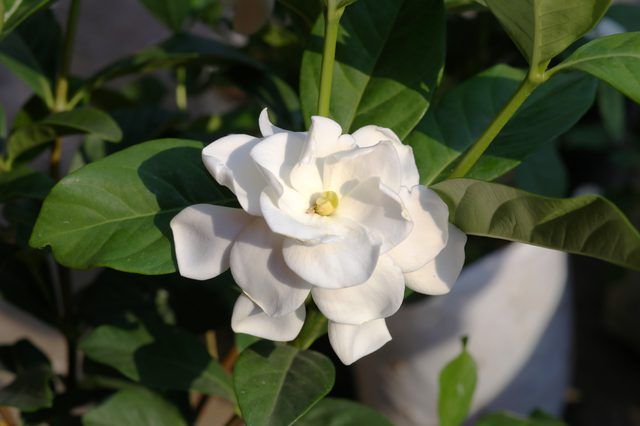Bulbs
Flower Basics
Flower Beds & Specialty Gardens
Flower Garden
Garden Furniture
Garden Gnomes
Garden Seeds
Garden Sheds
Garden Statues
Garden Tools & Supplies
Gardening Basics
Green & Organic
Groundcovers & Vines
Growing Annuals
Growing Basil
Growing Beans
Growing Berries
Growing Blueberries
Growing Cactus
Growing Corn
Growing Cotton
Growing Edibles
Growing Flowers
Growing Garlic
Growing Grapes
Growing Grass
Growing Herbs
Growing Jasmine
Growing Mint
Growing Mushrooms
Orchids
Growing Peanuts
Growing Perennials
Growing Plants
Growing Rosemary
Growing Roses
Growing Strawberries
Growing Sunflowers
Growing Thyme
Growing Tomatoes
Growing Tulips
Growing Vegetables
Herb Basics
Herb Garden
Indoor Growing
Landscaping Basics
Landscaping Patios
Landscaping Plants
Landscaping Shrubs
Landscaping Trees
Landscaping Walks & Pathways
Lawn Basics
Lawn Maintenance
Lawn Mowers
Lawn Ornaments
Lawn Planting
Lawn Tools
Outdoor Growing
Overall Landscape Planning
Pests, Weeds & Problems
Plant Basics
Rock Garden
Rose Garden
Shrubs
Soil
Specialty Gardens
Trees
Vegetable Garden
Yard Maintenance
Edible Gardenia
Harvested at their peak, edible gardenia flowers add fragrance and elegance to a host of recipes. Grow them organically so you know they're safe to eat.
If the perfume from a single gardenia blossom can saturate a small room, think what it might do for a recipe. Gardenia (Gardenia augusta, Gardenia jasminoides) flowers aren't just hauntingly fragrant, they're edible. Fresh or dried blossoms from evergreen gardenias -- which grow in U.S. Department of Agriculture plant hardiness zones 8 through 10 -- flavor teas and other beverages, syrups, sugars, rice or oat dishes and desserts. Toss the fresh blooms into fruit salads, or preserve them in honey.

Warning
Add gardenias to your recipe roster only if you follow the rules of safe flower consumption.
Edible Flower Etiquette
Edible flowers have gained widespread acceptance in culinary circles. If you decide to give gardenias a try, follow the same safety rules professionals use.
Use certified organic gardenias, grown without chemical pesticides or weedkillers, and also without having been fertilized with animal manure for at least four months.
Avoid flowers from florist shops unless they are labeled edible; get them from organic growers at farmer's markets or the organic produce sections of grocery or health food stores.
Introduce them to recipes in small amounts, until you're confident they don't cause an allergic reaction or digestive problems.
Always check for possible allergies before serving gardenias to others.
Growing Your Own
Gardenias grown for to eat need the same care as strictly ornamental flowers. The difference is in the organic management of their common pests.
Aphids, mealybugs, whiteflies and scale insects often infest the plants, draining sap and excreting gooey waste called honeydew.
Nearly invisible spider mites spin webs on the backs of the leaves.
Tiny black flower thrips feed on buds and petals, often distorting the blooms and preventing the buds from opening.
Organic, ready-to-use insecticidal soap sprayed on the plants until it drips from all their surfaces controls all these pests. It's safe to use up to the day and including of harvest.
Harvesting Gardenia Flowers
Timing
As short-stemmed flowers, gardenias are best harvested three to four hours before they'll be used. For maximum fragrance and flavor, harvest them early in the morning while it's still cool.
Things You'll Need
Spray bottle of cold water
Clean, sharp stem cutters
Rubbing alcohol
Clean towel
Shaded basket
Step 1
Before cutting, inspect the flowers for bugs. Spraying with cold water dislodges some insects and convinces others to fly away.
Step 2
Harvest flowers that are fully open, still white and free of spots or other damage. Cut them with at least 2 inches of woody stem attached. To avoid spreading disease, wipe the stem cutter's blades with a clean towel dipped in rubbing alcohol after each cut and wipe them with a clean towel
Step 3
Holding the stems, place the flowers in a shaded basket to keep them cool and protect them from being crushed when you carry them to the kitchen.
Cleaning and Storing
To clean the flowers, hold the stems and dip the heads in a container of cool water swirling gently to remove debris or any remaining bugs. Remove the cream-colored, pollen-bearing stamens from their centers. Then snip off the stems and lay the gardenias flat on paper towels to dry.
Until you're ready to use them, refrigerate the dry flowers in hard plastic containers lined with moist paper towels.
Interested in additional edible flowers? Check out our guide on Roses.